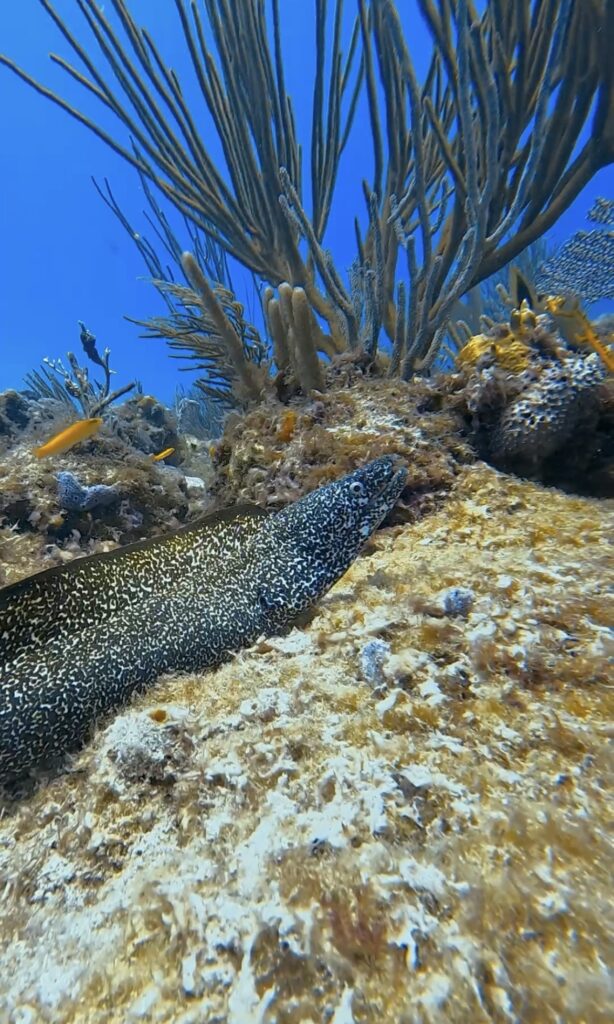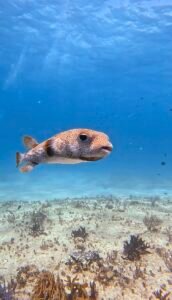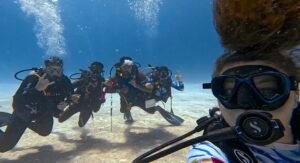Welcome, fellow diving enthusiasts! Whether you’re an experienced diver or just dipping your toes into the underwater world, understanding the language of scuba diving is essential for a safe and enjoyable experience. Welcome to the ABCs of Diving, where we will explore different scuba diving terms as we go through the alphabet. To read previous posts from this column check out our other blogs. Today we continue with the letter N:
Narcosis: Narcosis, also known as nitrogen narcosis is a condition that affects divers at depths typically below 30 meters (100 feet). It occurs when nitrogen, which makes up a significant portion of the air we breathe, has a narcotic effect under increased pressure. Symptoms can include impaired judgment, dizziness, and euphoria. The effects of narcosis are temporary and resolve as the diver ascends to shallower depths where the pressure is reduced.
NAUI (National Association of Underwater Instructors): The National Association of Underwater Instructors (NAUI) is a non-profit organization dedicated to promoting safe and enjoyable diving practices through training and education. NAUI offers a range of diving certifications, from beginner to professional levels. NAUI’s mission is to provide high-quality diver education and to support a global community of divers.
Neoprene: Neoprene is a type of synthetic rubber commonly used in diving wetsuits, drysuits, and other gear. It is valued for its thermal insulation properties, flexibility, and durability. Neoprene suits provide thermal protection by trapping a thin layer of water between the suit and the diver’s body, which is then warmed by body heat. This helps to maintain a comfortable body temperature in cooler waters.
Net Cutter: A Net Cutter is a safety tool used by divers to cut through entangled fishing nets or lines in emergencies. It is an essential piece of equipment for those who dive in areas where entanglement hazards are present. Net cutters are typically compact, with sharp blades designed to slice through ropes and nets quickly, allowing divers to free themselves or others if they become entangled.
Night Diving: Night Diving involves diving in low-light or darkness conditions. This type of diving offers a unique perspective of underwater life, as many marine species exhibit different behaviours at night. Night diving requires additional preparation, including the use of underwater torches or dive lights, to navigate and observe the underwater environment. It is an opportunity to experience a different side of the underwater world and can be a thrilling and rewarding part of diving.
Nitrox: Nitrox refers to a range of gas mixtures used in diving, where the air is enriched with oxygen and reduced in nitrogen compared to regular air. The most common type of nitrox is EANx (Enriched Air Nitrox), which typically contains 32% or 36% oxygen. Using nitrox can extend bottom time and reduce the risk of decompression sickness due to lower nitrogen levels. However, it requires specific training and equipment to use safely.
Scuba diving is a blend of technical skill, environmental awareness, and appreciation for marine life. By familiarizing yourself with these diving terms, you’ll enhance your diving knowledge and safety practices, ensuring each underwater adventure is a memorable and enjoyable experience. Whether you’re exploring reefs, wrecks, or underwater caves, the underwater world awaits with its mysteries and beauty. Happy diving!



